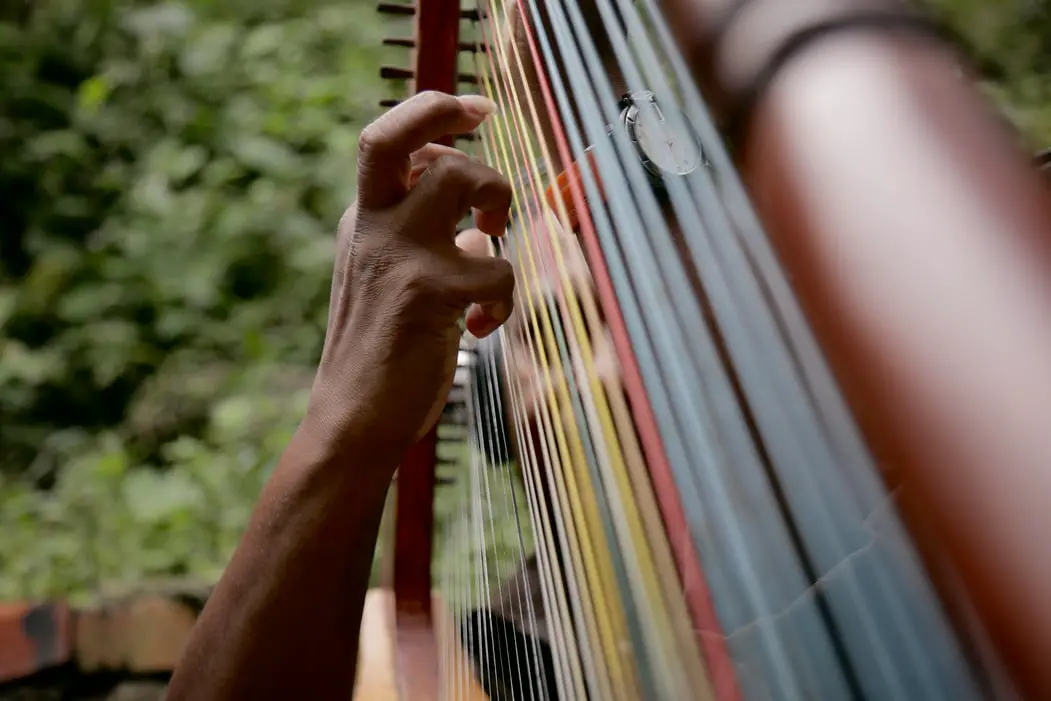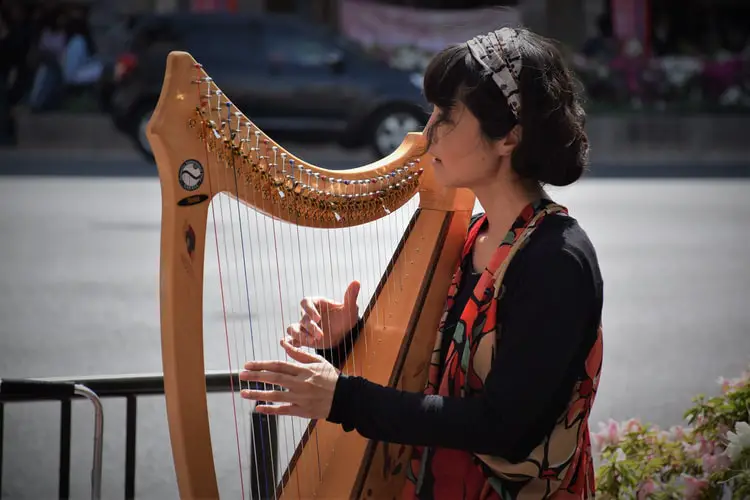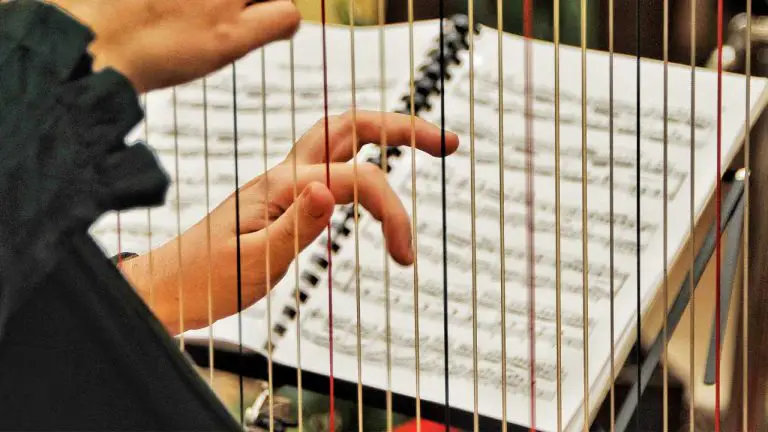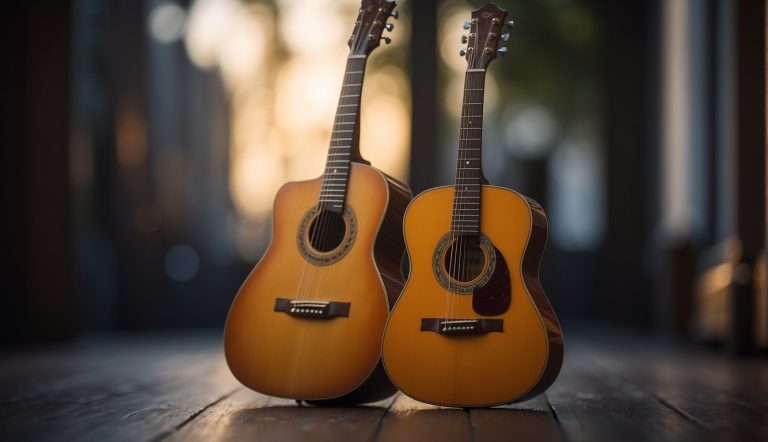Buying a Harp for Beginners – Everything You Need To Know
Folkstrings.com is reader-supported. When you buy through links on our site, we may earn a small commission.
Have you always wanted to play the harp?
When it comes to buying a harp for beginners, it can be a little stressful attempting to purchase a new instrument. What should you look for?
How much do they cost?.. How can you know if a harp is of excellent quality?
Learning the answers to these questions and more is important if you are a beginner.
It is imperative you carry out careful research and learn as much as possible about the features of harps, so you can make the best decision when making a purchase.
Purchasing a new harp can be confusing for some people.
There are so many things to consider and unique features to decide on when researching harps.
It is important to research the best brands, read reviews, and think about your needs, before making a purchase.
With this guide, you will learn everything you need to know about harps, so you will feel confident making a decision.
Harps are one of the most beautiful instruments, and learning to play one will bring you joy for many years to come.
Table of Contents
- What Type of Harp Is Best for Beginners?
- What Is the Best Harp for Beginners?
- Why Are Harp Strings Different Colors?
- What Are Harp Strings Made Of?
- Are Harps Hard to Learn?
- Am I Too Old to Learn to Play the Harp? How Long Does It Take to Learn to Play the Harp?
- Conclusion – Harp for Beginners
What Type of Harp Is Best for Beginners?

Beginning to play an instrument is exciting for most people, no matter their age.
Along with feeling exhilarated about learning to play the harp, there are many unknowns that need to be addressed.
It is important to note, everyone has to start somewhere.
No one is born knowing how to play any instrument.
As with all things in life, you must gain knowledge to know what to look for in a harp for beginners.
Because harps are not standard instruments, it can sometimes be difficult to compare one model to another.
When considering the best harp for beginners, it is important to understand that a harp is a very physical instrument.
The harp should fit your body well and feel comfortable.
It should align with your body, without feeling awkward.
Ergonomics is important when it comes to playing the harp as a beginner.
If the harp is too small, you’re going to feel cramped up while playing.
On the other hand, if the harp is too large, you may find yourself stretching beyond your comfort zone, which can impede your playing ability, especially in the beginning.
Many beginners make the mistake of thinking a smaller harp will be easier to play.
Unfortunately, this is not necessarily the case. Playing a smaller harp is actually more difficult than playing a larger one.
Because of the configuration of the strings and the size, smaller harps can be trickier to hold and more complicated to play.
When it comes to learning to play the harp, floor size models offer the best stability and ergonomic design.
Although there is nothing wrong with playing a small harp, these are best suited for a student that has learned to play the instrument proficiently.
Smaller harps are sometimes referred to as travel harps, because they are so portable.
Beginners will likely find a pedal harp to be the best choice.
Lever harps are not considered training harps.
Most people who start playing the harp will begin with the pedal version and later transition to a lever harp because this type offers the full range of possibilities with music.
What Is the Best Harp for Beginners?
Check out our recent article below, where we run through our top ten picks of the best harps for beginners:
Why Are Harp Strings Different Colors?
When individuals are first starting to learn to play the harp, one of the most common questions they have is ‘why the strings different colors?’
Just like a piano, there are different strings on a harp.
The different colors on hard strings are as follows:
- All of the C strings are red.
- All F strings are black or blue.
- All of the other strings are uncolored or white.

Imagine, if you will, a piano with all white keys. They would be extremely difficult to play.
Just like pianos, the strings are colored on the harp to help harpists find their place at a glance.
While some people believe the strings are colored simply to help beginners learn, the colored strings are also instrumental in helping experts play the harp.
Just like with the piano, even expert harpists would find it difficult to play the harp efficiently without a color-coded string set.
Harp strings with different colors is not a modern idea.
For over 200 years, harp makers have been using this standard system to help harpists identify where they are in the octave.
To ensure you are in the right place, it is important to understand the octave of a harp.
Unlike a standard piano, which runs C to C, the octave of harps run E to E.
The color-coded strings will help you as a beginner and as you progress in learning how to play the harp.
Color-coded strings are especially important on larger harps that can have up to 47 strings.
What Are Harp Strings Made Of?

In the harps of today, the strings are made with nylon, metal (steel wire wrapped with bronze, copper, gold, silver and brass) and animal intestines.
There have been alternatives to gut strings created to give players the warm tone that gut strings give to the sound of the instrument, such as Nylgut which some also call synthetic gut.
So there are more than a few options harp players have to make when deciding what type of harp string to use.
A Brief History of the Harp String
The earliest harp instruments likely had gut strings. They would either use the guts of a goat or a sheep but would also sometimes also use pigs, horses and cattle.
It might be worth noting that the term “catgut” does not refer to the idea of cat guts or intestines being used as harp strings, this is a common misconception.
Classical and baroque musicians prefer using strings made from intestines or guts, as they feel these types of strings give a much warmer, rich tone that can also handle a much higher tension.
In 1930, nylon was invented and soon after, in the 1940s, nylon strings could be used on instruments.
Are Harps Hard to Learn?
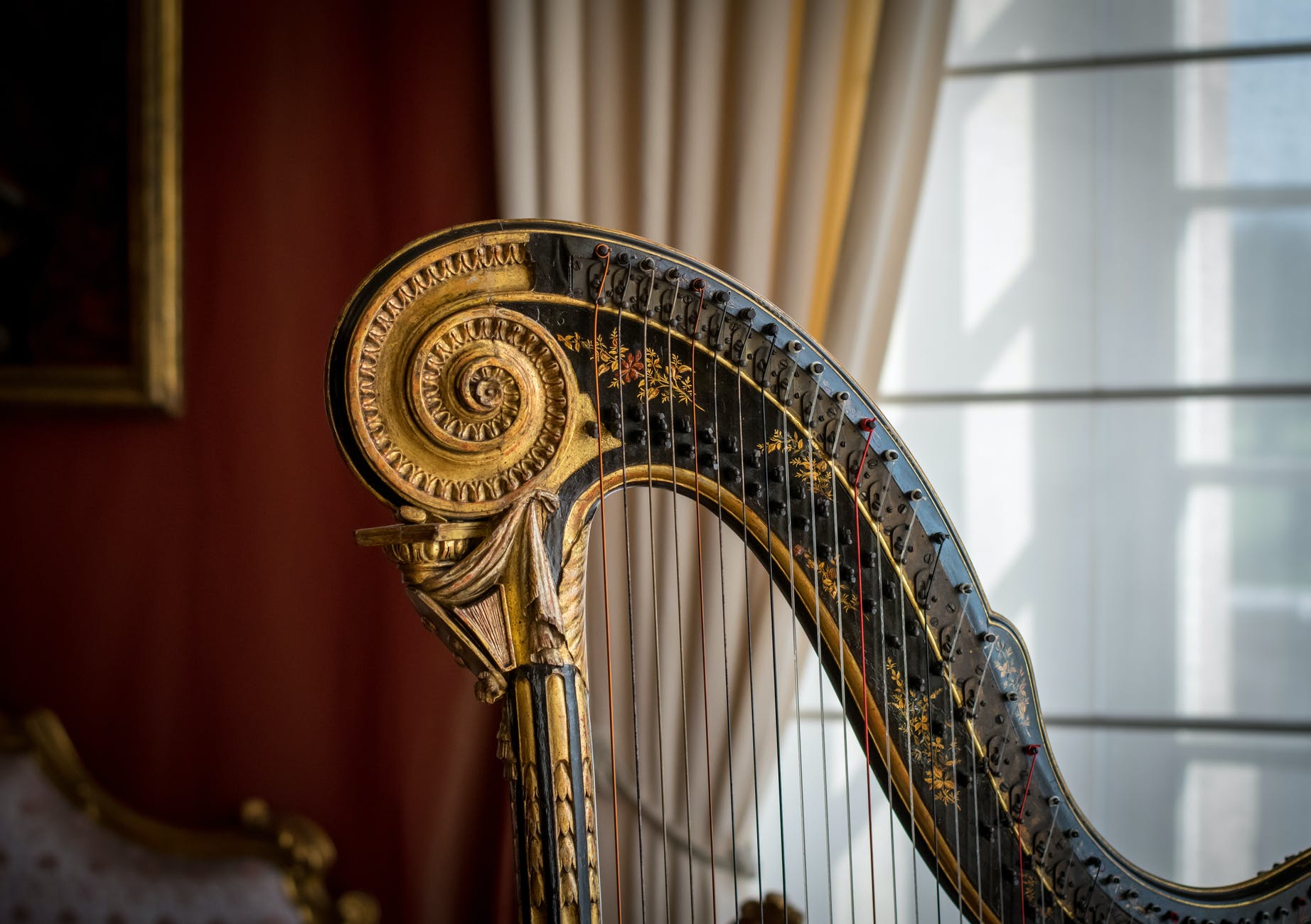
When people watch someone play the harp, they often automatically assume it is extremely difficult to play.
Thankfully, this is not the case.
At its most basic level, the harp is actually one of the easiest stringed instruments to begin to play.
There is no fretting, as with the guitar, and harpists do not have to use a bow, as with the violin.
When it comes to stringed instruments, the guitar and violin are listed as the most difficult, while the harp is considered one of the easiest to play.
Many people are surprised at just how quickly they can begin to start playing the openings of a simple song on a harp, no matter how rudimentary their knowledge.
Even beginners can begin to play a melody within a matter of a few minutes, making the harp a rewarding instrument to learn.
Those who know how to play the piano will be surprised to discover this knowledge can help them learn to play the harp.
Piano players already know how to read treble and bass clef, and they will find the fingering style is very similar.
Just like with the piano, the right hand is used to play the melody and the left hand plays the chords and the base.
One of the best things about learning to play the harp, is the chords are obvious and there are no complicated chord charts to follow.
Am I Too Old to Learn to Play the Harp? How Long Does It Take to Learn to Play the Harp?
Older people sometimes have the mistaken notion that they are too old to learn to play the harp.
If you were wondering if you are too old to start this instrument, the answer is a resounding no.
It is never too late to learn to play any instrument, and with the ease of playing the harp, this instrument is ideal for people of all ages.
Many older people are surprised to learn that playing the harp is good for them.
The harp helps to improve a person’s coordination.
There are also therapeutic benefits that come from the vibrations of the strings.
No matter the person’s age, those who played the harp will find that it helps to keep their brain trained and young.
People of all ages enjoy playing the harp.
As they lean their cheeks against the harp, and feel the beautiful vibrations, looks of sheer joy cross their faces, and it is hard to pry them away from the instrument.
Many beginners who are just starting out learning how to play the harp want to know how quickly they can master this instrument.
It is important to note, that while most people will be able to play a simple tune with their first lesson, it generally takes about three years to become proficient at playing the harp.
In the beginning, you will only need to practice about ten minutes a day.
Practicing daily will help you to get the fundamentals down before you progress further into the delights of this instrument.
As with all instruments, you must be committed and passionate about learning to play the harp, or you will not stay dedicated to the practice that is necessary for mastering this instrument.
Conclusion – Harp for Beginners
Buying a new harp is exciting for beginners.
Once you have found the perfect one, getting your hands on it and starting to play is a relaxing and joyful experience.
You will not want to stop playing!
The harp is an excellent instrument for beginners because you can create beautiful sounds simply by starting to strum its strings.
As you progress in learning to play, the harp will come alive in your hands, and you will feel like you two are one while you play.
Author Profile
-
Daniel Johnstone is an English writer with a love for stringed instruments from around the world.
He shares his love for these instruments through his writing for folkstrings.com, a website dedicated to all things related to folk string music.
Daniel's passion for music started at a young age, and he has since become an accomplished musician, playing guitar, cavaco, and recently, the harp.
His dedication to learning and sharing his knowledge of stringed instruments is evident in his insightful and engaging blog posts. Whether you're a seasoned musician or a beginner, Daniel's writing is sure to inspire and entertain you.
When he's not playing music or writing, you can find Daniel exploring new instruments and seeking out new sounds to share with his readers.
Latest entries
 AutoharpApril 4, 2024What Is the Autoharp Made Of: Exploring Its Materials and Craftsmanship
AutoharpApril 4, 2024What Is the Autoharp Made Of: Exploring Its Materials and Craftsmanship AutoharpApril 4, 2024Is Autoharp Easy to Play? Unveiling the Truth for Beginners
AutoharpApril 4, 2024Is Autoharp Easy to Play? Unveiling the Truth for Beginners AutoharpApril 4, 2024What Is an Autoharp Worth? Your Guide to Pricing and Value
AutoharpApril 4, 2024What Is an Autoharp Worth? Your Guide to Pricing and Value AutoharpApril 4, 2024Are Autoharp and Zither the Same Thing? Unraveling String Instrument Myths
AutoharpApril 4, 2024Are Autoharp and Zither the Same Thing? Unraveling String Instrument Myths
Affiliates:
This post may contain affiliate links that at no additional cost to you, the site may earn a small commission. We only recommend products we would use ourselves and all opinions expressed on this site are our own.
Accuracy Advice:
While we strive to provide up-to-date and accurate information, the content in this article may not reflect the most current research or medical guidelines. We encourage readers to do further research and consult with professionals for more personalized advice.
Our Recommendations:
The products and services mentioned in any of our articles are recommended based on our independent research and personal experience. We are not sponsored by any company. We aim to suggest products and services we believe are of high quality and could be beneficial to our readers.

